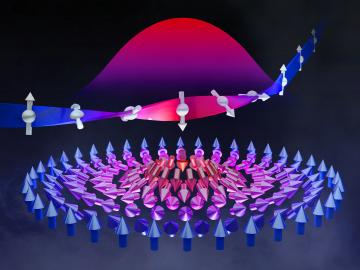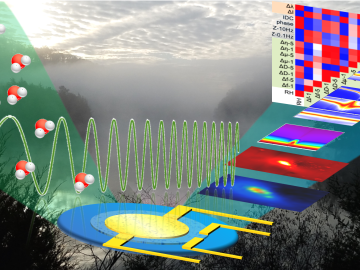
Filter News
Area of Research
- Advanced Manufacturing (1)
- Biology and Environment (9)
- Computer Science (2)
- Energy Science (32)
- Energy Sciences (1)
- Isotopes (1)
- Materials (35)
- Materials for Computing (5)
- National Security (5)
- Neutron Science (16)
- Nuclear Science and Technology (2)
- Quantum information Science (3)
- Supercomputing (25)
News Topics
- (-) Artificial Intelligence (8)
- (-) Biomedical (22)
- (-) Energy Storage (21)
- (-) Grid (7)
- (-) Machine Learning (8)
- (-) Materials Science (37)
- (-) Mathematics (2)
- (-) Quantum Science (14)
- (-) Transportation (15)
- 3-D Printing/Advanced Manufacturing (28)
- Advanced Reactors (14)
- Big Data (11)
- Bioenergy (13)
- Biology (5)
- Biotechnology (2)
- Buildings (1)
- Chemical Sciences (5)
- Clean Water (2)
- Composites (1)
- Computer Science (39)
- Coronavirus (25)
- Critical Materials (2)
- Cybersecurity (4)
- Environment (29)
- Exascale Computing (3)
- Frontier (1)
- Fusion (13)
- High-Performance Computing (3)
- Isotopes (8)
- Materials (2)
- Mercury (1)
- Microscopy (8)
- Molten Salt (2)
- Nanotechnology (17)
- National Security (2)
- Neutron Science (35)
- Nuclear Energy (31)
- Physics (13)
- Polymers (7)
- Security (3)
- Space Exploration (2)
- Summit (17)
Media Contacts

Kübra Yeter-Aydeniz, a postdoctoral researcher, was recently named the Turkish Women in Science group’s “Scientist of the Week.”

Researchers at ORNL used quantum optics to advance state-of-the-art microscopy and illuminate a path to detecting material properties with greater sensitivity than is possible with traditional tools.

Oak Ridge National Laboratory scientists have discovered a cost-effective way to significantly improve the mechanical performance of common polymer nanocomposite materials.

Scientists discovered a strategy for layering dissimilar crystals with atomic precision to control the size of resulting magnetic quasi-particles called skyrmions.

The Department of Energy has selected Oak Ridge National Laboratory to lead a collaboration charged with developing quantum technologies that will usher in a new era of innovation.

A team led by Oak Ridge National Laboratory developed a novel, integrated approach to track energy-transporting ions within an ultra-thin material, which could unlock its energy storage potential leading toward faster charging, longer-lasting devices.

Oak Ridge National Laboratory researchers have developed artificial intelligence software for powder bed 3D printers that assesses the quality of parts in real time, without the need for expensive characterization equipment.

Pick your poison. It can be deadly for good reasons such as protecting crops from harmful insects or fighting parasite infection as medicine — or for evil as a weapon for bioterrorism. Or, in extremely diluted amounts, it can be used to enhance beauty.

Oak Ridge National Laboratory researchers have developed a machine learning model that could help predict the impact pandemics such as COVID-19 have on fuel demand in the United States.

An all-in-one experimental platform developed at Oak Ridge National Laboratory’s Center for Nanophase Materials Sciences accelerates research on promising materials for future technologies.


